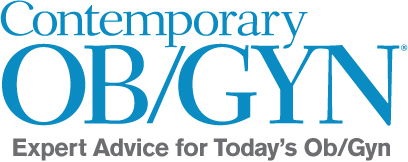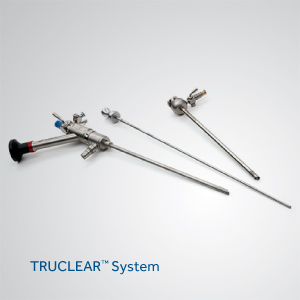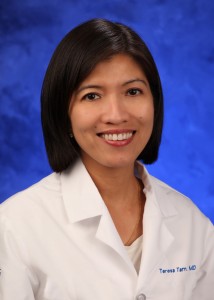Overview
Retained products of conception (RPOC) could be encountered after spontaneous abortion or elective termination, and after normal vaginal or cesarean delivery.1 RPOC may also be encountered after suction dilation and curettage (D&C) for early first trimester miscarriages. Hysteroscopic-directed resection allows for selective removal of RPOC and endometrial pathology, sparing the rest of the intrauterine cavity. Compared to conventional D&C, hysteroscopy involves less endometrial trauma resulting in less intrauterine adhesions and better fertility outcomes.2
Blind evacuation of the uterine cavity carries multiple risks including bleeding, infection and perforation that could potentially result in infertility.3 Multiple initial studies employed a conventional resectoscope during operative hysteroscopy to remove RPOC, but tissue resection with electrocautery carried more procedural risks and was difficult to learn.4
Although bleeding and pain are sensitive clinical criteria for RPOC, physicians are often left with a confusing clinical scenario, as these symptoms are common during the normal postpartum course. Utilizing the TRUCLEAR™ Hysteroscopic Tissue Removal System provides a directed evacuation of gestational products facilitating visualization and directed removal of RPOC especially in patients with uterine and intracavitary abnormalities.
A benefit of hysteroscopic removal of RPOC is the reduction of intrauterine adhesions from selective hysteroscopic curettage as compared to blind dilation and curettage (D&C).5 Patients may also benefit from hysteroscopic removal of RPOC, since it has been associated with a shorter time interval to conception signifying improved reproductive outcomes.2
In conclusion, hysteroscopic removal of RPOC continues to demonstrate both diagnostic and therapeutic benefits to patients. Through its continued use, the hysteroscopic technique for removal of RPOC will likely see an increase in safety and efficiency in the future compared to a blind D&C.
1. Westendorp IC, Ankum WM, MoI BW, Vonk J. Prevalence of Asherman’s syndrome after secondary removal of placental remnants of a repeat curettage for incomplete abortion. Human Reproduction. 1998; 13:3347-50.
2. Rein DT, Schmidt T, Hess AP, Volkmer A, Schondorf T, Breidenbach M. Hysteroscopic management of residual trophoblastic tissue is superior to ultrasound-guided curettage. Journal of Minimally Invasive Gynecology. 2011; 18:774-778.
3. Golan A, Dishi M, Shalev A, Keidar R, Ginath S, Sagiv R. Operative hysteroscopy to remove retained products of conception: novel treatment of an old problem. Journal of Minimally Invasive Gynecology 2011; 18:100-103.
4. Emanuel MH, Wamsteker K. The intrauterine morcellator: a new hysteroscopic operating technique to remove intrauterine polyps and myomas. Journal of Minimally Invasive Gynecology. 2005;12(1)62-66.
5. Smorgick N, Barel, O, F. Fuchs N, Ben-Ami I, Pansky M, Vaknin Z. Hysteroscopic management of retained products of conception: meta-analysis and literature review. European Journal of Obstetrics & Gynecology and Reproductive Biology. 2014; 173:19-22.



